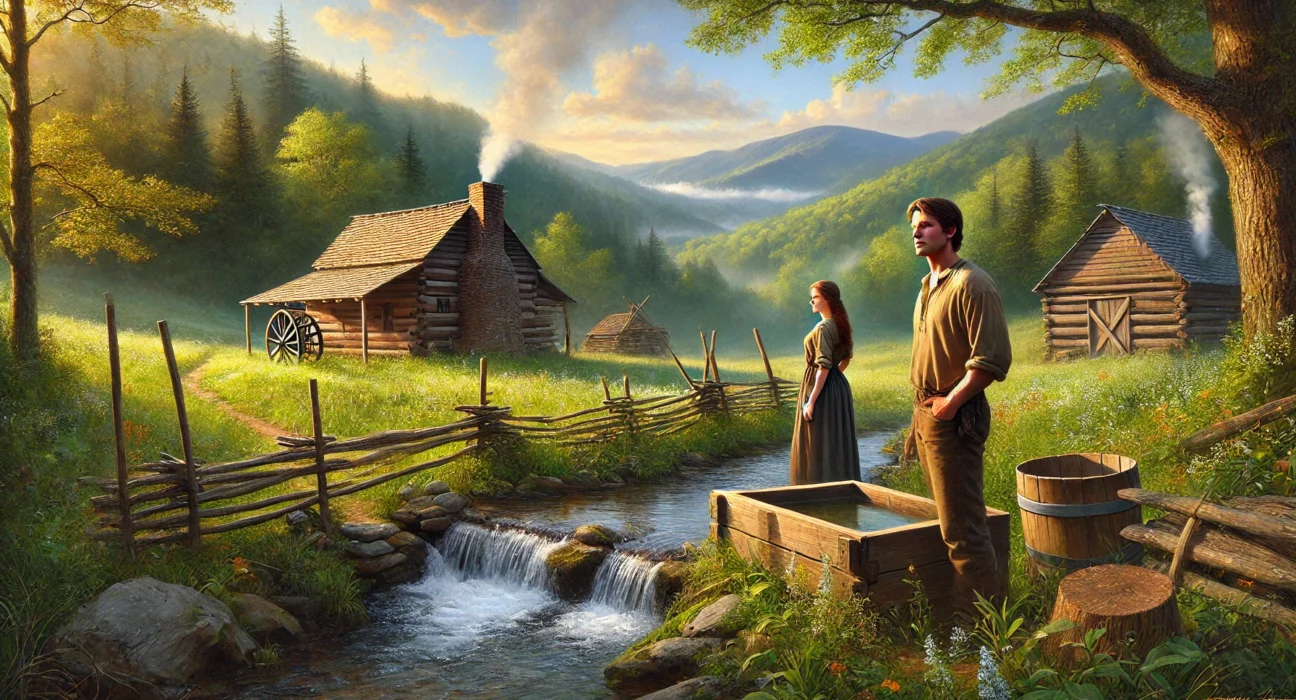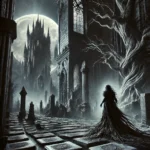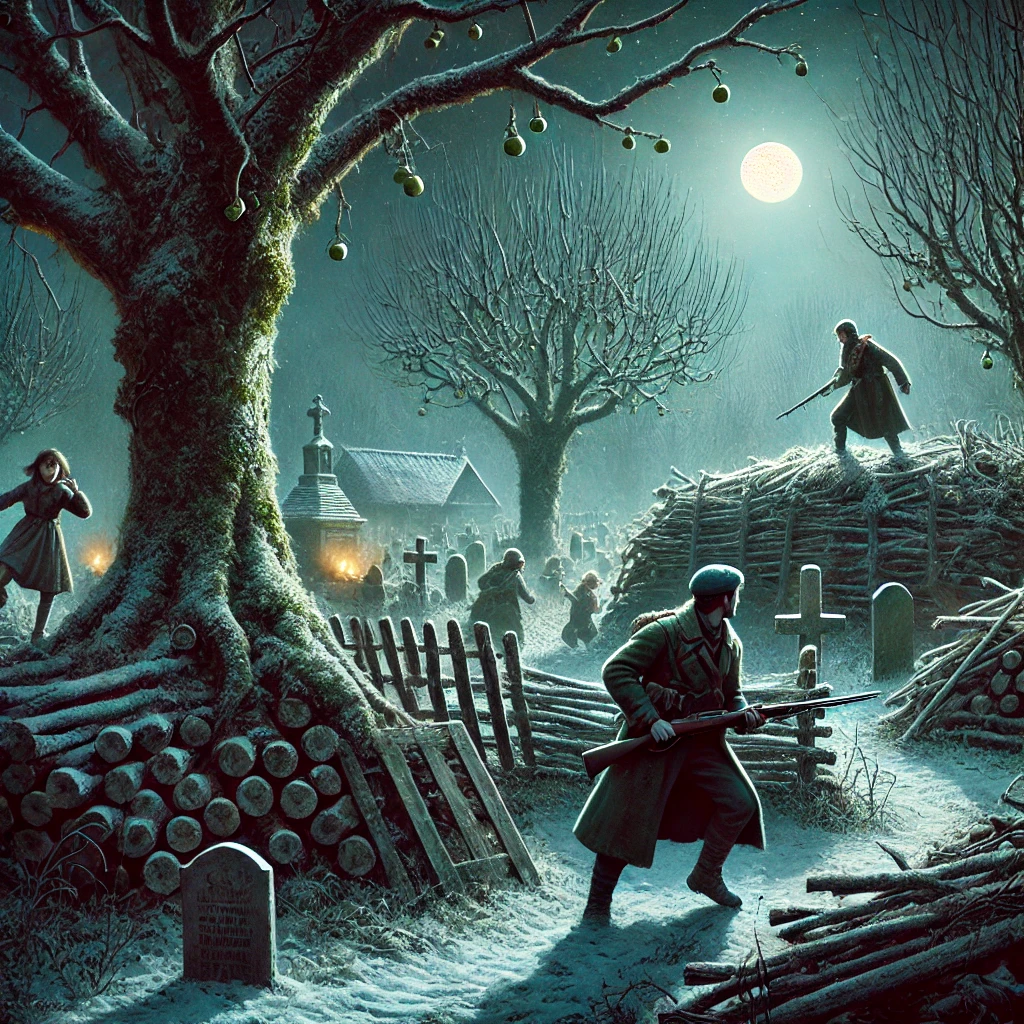The Mountain Girl, written by Emma Payne Erskine, is a romance novel first published in 1911. It tells the story of David Thryng, a doctor from England who ventures into the rugged Appalachian mountains to recover from illness. Through his interactions with the local mountain people, particularly a young woman named Cassandra, the novel explores themes of love, survival, and the clash between different cultures.
Plot Summary
David Thryng, a young English doctor worn out from illness and the pressures of his former life, arrives in the remote Appalachian mountains in search of healing. The train that carries him drops him off at Carew’s Crossing, a desolate flag station in the heart of the mountains. Snow covers the wilderness around him, and the isolation is immediately evident. As the train departs, leaving him in the melting snow, David finds himself pulled into a dramatic scene—a child named Hoyle lies unconscious under a wagon while a frightened mule and colt rear dangerously nearby. Without hesitation, David rescues the boy, his own fatigue momentarily forgotten.
The boy’s sister, Cassandra, is a quiet, capable young woman who quickly takes control of the situation. David is struck by her strength as she manages the unruly animals with surprising skill, all the while comforting Hoyle. The child, who suffers from a deformity that twists his neck, clings to his sister, who seems to be the heart of their small world. Although she is reserved, her expressions and care for her brother reveal her depth of emotion.
David soon learns that the two are alone, save for a brother named Frale, who has disappeared into the wilderness, pursued by unseen threats. The mention of Frale unsettles Cassandra, and David begins to grasp the unspoken dangers that lurk in the hills. Still weakened from his journey, David confides that he has come to the mountains on the advice of a friend, Adam Hoyle, to recover his health. Recognizing the name, Cassandra offers to take him to her home for the night, where he can rest before continuing to the cabin he is meant to occupy.
Cassandra and Hoyle’s home is a rough, rambling house nestled on the side of the mountain. The primitive setting, while lacking in comfort, is warmed by the kindness of Cassandra’s mother and their neighbor, Aunt Sally. Inside, the fire burns brightly, and though the food is meager—cornbread, pork, and honey—it provides a feast for David, who has eaten little during his travels. As he rests, David observes the home’s worn simplicity and the quiet dignity with which the family lives. Despite their poverty, there is a sense of order and peace in the household.
The night wears on, and David reflects on his own life. He is a younger son from a family of privilege, yet he has always rejected the easy path set before him, drawn instead to the healing arts and the desire to help others. This choice has led him here, to a land so far removed from the world he knows. As the mountains loom around him, David feels both humbled and strangely uplifted. His thoughts wander to Cassandra—her serenity, her quiet strength, and the burden she carries for her family. Her life, so deeply tied to the rhythms of the land, contrasts sharply with the world he has left behind.
The next morning, David awakens refreshed, invigorated by the mountain air and the promise of a new beginning. He steps outside into the bright sunlight, the snow now melted, revealing the rugged beauty of the Appalachian wilderness. The day feels alive with the scent of pine and the sound of rushing water from a nearby stream. David is struck by the simple majesty of the land, but the reality of his situation soon returns. Cassandra and her family live a life of survival, and there is little room for the romanticized notions of nature he once held.
As the days pass, David becomes more entwined in the lives of the mountain people. He discovers that Frale, the elusive brother, has been involved in violent disputes, and the fear of retribution haunts the family. The mountains hold secrets—laws of their own that outsiders like David can barely understand. Yet, as he spends more time with Cassandra, he sees the beauty in her resilience and the love she has for her brother and mother. Slowly, David begins to find healing, not just in his body but in his soul. The mountains, harsh and unforgiving as they are, offer him a clarity he has never known.
One evening, Frale returns. His presence brings tension to the household, as it is clear he is on the run, hunted for his involvement in a deadly feud. David, though an outsider, cannot remain untouched by the unfolding drama. He witnesses the weight that falls on Cassandra’s shoulders as she tries to protect her brother and hold the family together. Frale, a restless and troubled soul, is torn between staying to help his family and fleeing to avoid capture.
In the quiet moments between these storms, David and Cassandra begin to share more of themselves. The bond that forms between them is unspoken yet undeniable. Cassandra’s life is bound by the needs of her family, the expectations of the mountain people, and the harshness of the land. David, on the other hand, has always sought to escape the confinements of his life, yet here, in the simplicity and struggle of mountain life, he finds a sense of purpose.
As winter deepens, so too does the danger surrounding Frale. Tensions rise within the community, and the threat of violence looms over the household. Through it all, Cassandra remains a steady presence, her love for her family unshakable. David, drawn further into the complexities of life in the mountains, realizes that his healing comes not just from the natural beauty around him but from the connections he forges with these people, particularly with Cassandra.
In time, David must decide his future. His strength returns, and with it, the knowledge that he cannot remain in the mountains forever. The pull of his old life, the responsibilities he once fled, weigh heavily on him. Yet, the thought of leaving Cassandra and the world she represents feels equally impossible.
The mountains have a way of binding those who live within them, and as David contemplates his next steps, he knows that the peace he has found here is not something he can easily leave behind. Cassandra, too, must face her own choices—whether to remain rooted in her life of duty or to seek something beyond the confines of the mountains.
The world outside the mountains beckons, but the ties that have formed in the wilderness are strong, and David’s future, once so certain, is now filled with questions.
Main Characters
- David Thryng: An English doctor, ill and in search of recovery in the mountains. He is thoughtful, introspective, and compassionate. His journey leads him to both physical and emotional healing as he interacts with the mountain people and reflects on his own life choices.
- Cassandra: A young, resilient mountain girl who becomes central to David’s life. Practical, strong, and independent, she takes care of her family and demonstrates deep wisdom despite her lack of formal education.
- Hoyle: Cassandra’s younger brother, a shy and physically frail boy with a deformity. His innocent, observant nature adds to the tender relationship he develops with David.
- Frale: A complex character, Frale is connected to Cassandra and the harsh realities of mountain life. He is burdened by difficult circumstances, including a violent altercation that haunts him.
Theme
- Isolation and Connection: The novel explores how isolation in the Appalachian wilderness impacts individuals, fostering both loneliness and deep bonds among the characters who depend on each other for survival.
- Cultural Clash: David’s arrival from the sophisticated world of England into the primitive mountain community highlights the contrast between modernity and the old ways of the mountains. The characters navigate the differences in their worldviews and lifestyles.
- Redemption and Healing: David seeks physical healing, but the mountains offer him a more profound emotional and spiritual redemption. The novel portrays how nature and human connection can heal wounds deeper than physical illness.
- Survival and Self-reliance: The novel frequently shows characters working together to survive in an unforgiving environment. Cassandra embodies self-reliance, managing the harsh demands of mountain life with grace.
Writing Style and Tone
Emma Payne Erskine’s writing is lush and descriptive, painting vivid pictures of the Appalachian landscape. Her style is immersive, with a strong focus on the natural environment, which becomes almost a character in its own right. She often uses dialogue rich in the dialect of the mountain people, which brings authenticity and depth to the setting and the culture of the characters.
The tone of the novel is reflective and often melancholic, particularly in the way David ponders his life choices and mortality. However, there is also a warmth to the narrative, particularly in the relationships that form between the characters. Erskine blends romance and drama with a sense of place, making the reader feel as though they are part of the rugged world she describes.
We hope this summary has sparked your interest and would appreciate you following Celsius 233 on social media:
There’s a treasure trove of other fascinating book summaries waiting for you. Check out our collection of stories that inspire, thrill, and provoke thought, just like this one by checking out the Book Shelf or the Library
Remember, while our summaries capture the essence, they can never replace the full experience of reading the book. If this summary intrigued you, consider diving into the complete story – buy the book and immerse yourself in the author’s original work.
If you want to request a book summary, click here.
When Saurabh is not working/watching football/reading books/traveling, you can reach him via Twitter/X, LinkedIn, or Threads
Restart reading!








